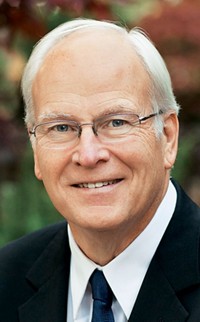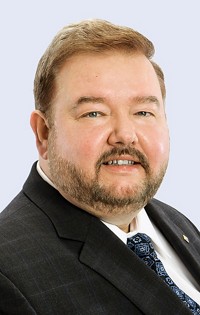Advertisement
Grab your lab coat. Let's get started
Welcome!
Welcome!
Create an account below to get 6 C&EN articles per month, receive newsletters and more - all free.
It seems this is your first time logging in online. Please enter the following information to continue.
As an ACS member you automatically get access to this site. All we need is few more details to create your reading experience.
Not you? Sign in with a different account.
Not you? Sign in with a different account.
ERROR 1
ERROR 1
ERROR 2
ERROR 2
ERROR 2
ERROR 2
ERROR 2
Password and Confirm password must match.
If you have an ACS member number, please enter it here so we can link this account to your membership. (optional)
ERROR 2
ACS values your privacy. By submitting your information, you are gaining access to C&EN and subscribing to our weekly newsletter. We use the information you provide to make your reading experience better, and we will never sell your data to third party members.
Policy
Choose your chemistry adventure, and take action
by Lee H. Latimer, Director-at-large, ACS Board of Directors
February 5, 2018
| A version of this story appeared in
Volume 96, Issue 6
What led you to join the American Chemical Society and to your first involvement with a local section or technical division?
My adventure with ACS began in graduate school when I joined with other students to gain access to its numerous journals to read at home.
I became an ACS volunteer after being asked by a colleague to help put on a regional meeting sponsored primarily by my employer. Fellow ACS members tell me they also began volunteering after a colleague asked for their help with a local section or technical division activity. Others went to an ACS event and enjoyed it so much that they wanted to help out the next time. In the vast majority of cases, a personal request catalyzed someone to become a volunteer, and it is through these connections that we have built a community of chemists.
There are many “ACS histories,” both alike and unique. The important aspect of all of them is that so many members participate, making ACS unique among professional societies and a provider of great opportunities to connect with your interests.
However, many of us are challenged for time as we juggle work, family, and other responsibilities. When I talk with ACS members, the issue of time comes up frequently. If we cannot get involved in an activity, it’s not because we lack interest but rather because we lack time to be involved.
The good news is that ACS local sections, divisions, and other entities are creating new opportunities to engage, both in person and online. For many, the keyboards on their devices have given them more opportunities to be heard, to develop projects, and to help others in the milliseconds we can find. The internet continues to launch a new world for work, activities, projects, information, and communication.
One activity that takes very little time and can be done at any point in the day is using the ACS’s Act4Chemistry network. The Act4Chemistry network makes it easy for chemists to communicate with legislators, particularly in relation to proposed legislative actions. It provides quick access to legislators’ contact information, as well as letter templates to customize and send. The network also provides alerts about legislation of interest to chemists and supporters of science, technology, engineering, and mathematics (STEM) education issues.
Act4Chemistry has more than 15,000 members, and the impact of their collective voices on recent issues is evident. One example is the proposal in 2017 to tax graduate student tuition waivers, which drew more than 2,700 letters of opposition from ACS members directly to hometown legislators. Fortunately, that proposal did not make it into the final version of the tax reform bill (C&EN, Nov. 20, page 14). Your voice can help make a difference. To join Act4Chemistry and connect with your local and state legislators, visit www.acs.org/Act4Chemistry.
Another way to make an important contribution to chemistry, and to history, is by submitting a National Historic Chemical Landmark nomination. The places we work or study, all over the U.S., have been places of significant accomplishment for the sciences. But if we don’t take action to remember and honor these landmarks and the individuals who made extraordinary contributions to the chemical sciences, these achievements will eventually be forgotten. These submissions take a bit of effort, but it’s a great way to get involved in something that has a lasting impact. Local sections can also develop their own programs to recognize achievements in chemistry and keep their legacies alive. Read about the existing landmarks and how to nominate at www.acs.org/landmarks.
Other ways to have an impact in ACS is by serving as a science coach, career counselor, Project SEED mentor, elected official, blogger, or someone who tweets about science, especially for your local section or division, sharing its news and activities. The ChemLuminary posters on Tuesday evenings at the fall ACS national meetings and the yearly write-ups on National Chemistry Week activities in C&EN (C&EN, Dec. 18, 2017, page 48) are great sources of ideas. You can find other examples of how to get involved in the community by visiting www.acs.org/getinvolved.
ACS is a community of and for chemists, and your commitment can range from talking with neighbors when they ask about chemistry, to substantial roles at the local, divisional, and national levels—and everything in between. Communities need a variety of efforts, and like a big tent, ACS has room for all types of chemists.
What is your adventure for chemistry, science, and the community of chemists? Contact me with your thoughts at lhlatimer@mindspring.com.
Views expressed are those of the author and not necessarily those of C&EN or ACS.






Join the conversation
Contact the reporter
Submit a Letter to the Editor for publication
Engage with us on Twitter